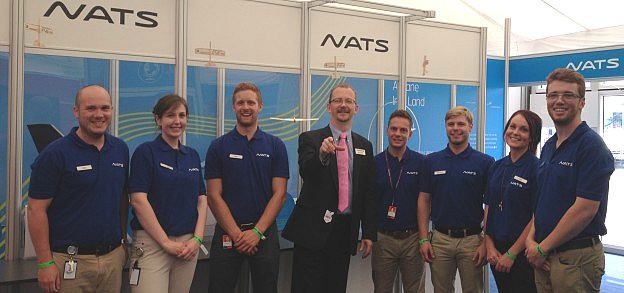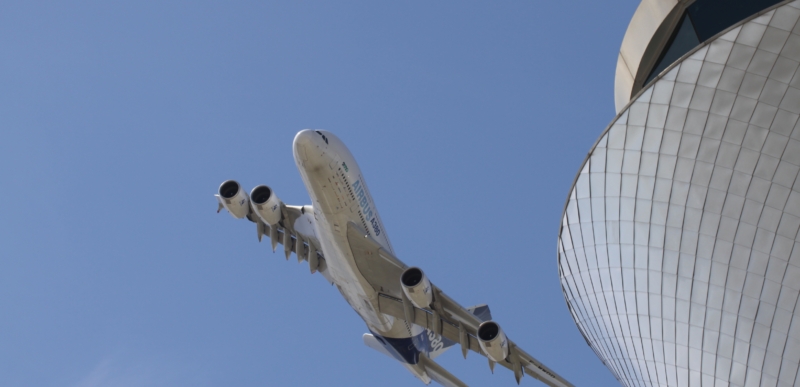The role of space in air traffic management
7 August 2014If you believe what you read in the papers, unmanned aerial vehicles, or Remotely Piloted Air Systems (RPAS) as they are officially known, will be much more commonplace in the future. Here at NATS, we really believe it’s going to happen, but challenges remain to safely integrate them into civil airspace.
Satellite technology can help integrate RPAS in much the same way as manned aircraft, both from a technical and an operational perspective. We took the opportunity at this year’s Farnborough Airshow to talk about some of the work that NATS is undertaking to help that achieve that integration.
The UK Space Zone, which showcased many future technologies including the role of space-technology and satellites in air traffic management, provided the perfect backdrop to the discussion.

Satellites will play an increasing role in managing aircraft positioning, helping to deliver the concept of trajectory management whereby aircraft navigate to a defined position at a defined time. We discussed how satellites will provide enhanced and additional capability across the Communications, Navigation and Surveillance domain delivering improved navigation performance, new surveillance capabilities and the data exchanges required for trajectory management.
NATS is playing a key role in enabling this work, and we have been asked by the European Space Agency and the European Commission to develop new aviation standards.
NATS provided expert input to two further seminars at Farnborough. The first was on resilience of the Global Navigation Space Systems (GNSS), covering the UK policy framework and an assessment of the threats posed by Personal Privacy Devices, which can jam GNSS signals used by aircraft. The second was about the role satellites will be playing by 2030, focusing on space systems which have the potential to generate operational efficiency and safety improvements across the industry, across the world.
We hope the seminars will trigger more detailed discussions over the coming months and years as satellite technology is used increasingly in managing both manned and unmanned aircraft.
If you are interested in any of the topics please leave your comments below, my colleagues Ramon Raposo and John Korna or I, who also presented for NATS at the airshow will be happy to answer any questions.
It wouldn’t be a blog mentioning Farnborough International Airshow without including some pictures from the event.





[The photos above were taken by our Chief Executive, Richard Deakin, at the 2014 show. You can see more of Richard’s photos on his Flickr channel.]
Comments
Please respect our commenting policy and guidelines when posting on this website.



